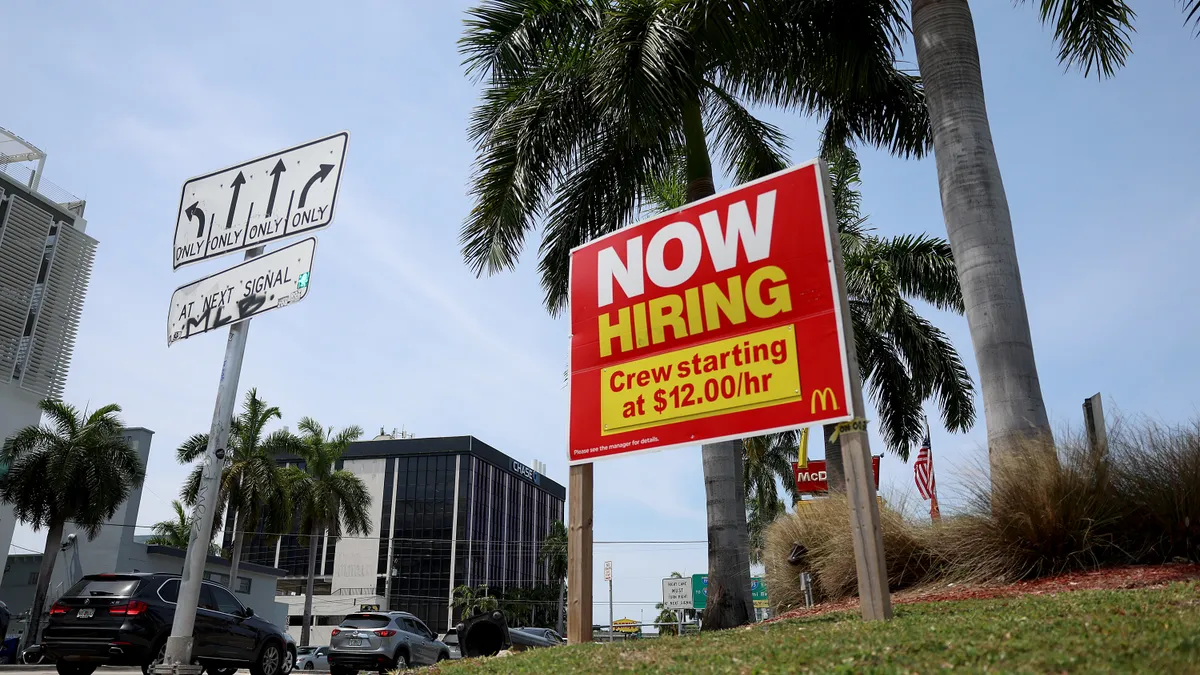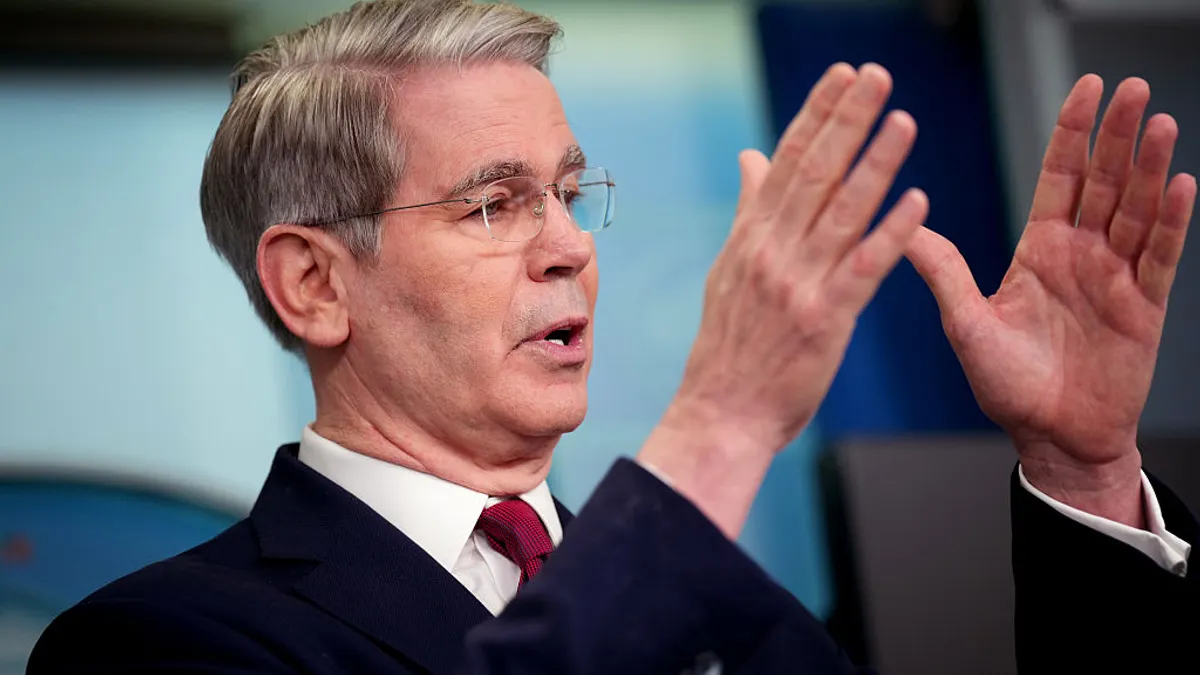CFO in the Know is an editorial series examining the roles CFOs play across a variety of industries. You can find the entire series here.
The faux meat category is the greatest thing since sliced bread, many analysts believe. It has the potential to be an $85 billion market and the two companies leading the charge, Beyond Meat and Impossible Foods, are media darlings that are treated more like rock-star tech companies than food companies.
It remains to be seen whether the companies can make meat substitutes, once the domain of whole-earth utopians, into a mainstream product category that could replace animal-based meat, as evangelists for the sector claim.
As consumers hit the grocery store in anticipation of the holiday season, starting with Thanksgiving, it’s likely that faux meat will end up on more dinner tables than ever, but both Beyond and Impossible face considerable financial challenges in turning their promise into reality.
Beyond expectations
By any measure, the competitors have built an impressive financial foundation.
Beyond Meat, founded in 2009 by Ethan Brown, uses protein from peas, rice, and mung beans as its core ingredients, with beet juice to simulate traditional beef bleeding.
It received venture funding from Kleiner Perkins, the iconic Silicon Valley fund that helped launch Amazon, Google, and Twitter, among other household tech names. Beyond had a number of early funders, too, including Bill Gates.
Its first products hit grocery stores in 2013, starting with faux chicken, carried by Whole Foods. Giant conglomerate Tyson Foods bought a 5% stake in 2016.
The company went public in May and immediately exploded, soaring 163% from its initial $25 per-share valuation to more than $65, the highest-growth IPO since 2000.
The company’s market capitalization jumped from about $1.5 billion to $3.8 billion that day.
Brown said he was elated to see to "see the markets reward" what he called his company’s "manic pace of innovation."
The company has since come back down to earth, but it remains a strong performer. In the first half of this year, it reported revenues of $107 million, a 256% increase over the $30 million it reported in the first half of 2018. Its gross profit margin improved from 15% in the second quarter of 2018 to 33.8% in the second quarter of this year.
It still reported a net loss of $0.24 per share, up from a net loss of $1.22 in the second quarter of 2018.
In results released October 28, its net revenue increased 250% year-over-year to $92 million, gross profit improved to $32.8 million, or a 35.6% gross margin, and net income increased to $4.1 million, compared to a net loss of $9.3 million in the prior year period.
The company is valued at around $9 billion, after peaking at about $14 billion this summer.
Impossible to believe
The other darling, Impossible Foods, was launched in 2011 by Pat Brown. It takes a different approach to simulate the look and feel of beef. It uses genetically engineered soy leghemoglobin, or heme, which gives the beef its bleeding quality.
It received initial capital raises of $75 million and $108 million by investors that included Google Ventures, Khosla Ventures, Viking Global Investors, UBS and Bill Gates.
Since 2016, it’s had several additional capital raises, including $75 million in 2017, $114 million in 2018 and another $300 million earlier this year. In all, it has raised close to $800 million over 12 funding rounds and has a valuation of about $2 billion, twice the typical unicorn size at which companies go public.
"We’ve been very lucky to have great investors," Impossible founder and CEO Pat Brown said on CNBC in August. "No shortage of great investors when we need money to support our growth."
In an interview with CFO Dive, Impossible Foods CFO David Lee said the company has no immediate plans to go public, despite its size and the success of Beyond Meats in the public markets.
"Most of the executive team has come from large public companies, and we are operating, every day, more and more like a global public company," Lee said. "It’s an important strategic option for the company to retain: the ability to choose capital from the public markets or the private markets, but we haven't announced any IPO or direct listing.”
Just how big is the market?
Analysts continue to debate the size of the faux meat market — is it as large as the market for all meat, or will it always be a fraction? — but the figure that comes up the most is $85 billion. That’s based on the demand for non-dairy milks, like almond, soy, or oat milk. People who buy alternative milk, the thinking goes, would also be interested in buying alternative meat as well.
But there’s a difference between the two markets. Much of the sales of alternative milk is driven by people with lactose intolerance and other medical conditions. In other words, people buy it because they have to, which doesn’t necessarily apply to fake meat. How many people will buy it just on its own merits?
Brian Holland of D.A. Davidson said the potential universe of faux meat buyers is much smaller than the consensus view.
"Our cautious approach to the total addressable market [is based on] fewer likely frequent purchasers of plant based meat as compared to milk, given roughly half the number of non meat eaters versus [the] lactose intolerant," he said.
That puts Beyond Meat in a different perspective. Holland says the optimal price-per-share for the company should be $130, far lower than its $235 July price, when it was 840% over its $25 opening price.
In early September, his firm recommended investors sell the stock and its price dropped almost 4%.
As of mid-September, Beyond was trading at about 57 times sales, still exorbitantly high.
It would have to generate $3.7 billion in sales — 22 times the revenue it’s generated in the past year — to get its price-to-sales ratio in line with established food companies like Nestle, Tyson Foods, ConAgra, Kellogg, and others eyeing the faux meat business, whose price-to-sales ranges from 0.8% to 2.4%.
Competition heating up
Meanwhile, competition is getting fierce for Beyond and Impossible and the real battle for market dominance is about to be joined.
Meat manufacturers and consumer goods giants such as Hormel, Smithfield, Perdue Farms, Nestle, Unilever and others are doing their own research and development for their own products.
So is Tyson Foods, which sold its stake in Beyond Meat earlier this year and is applying what it learned to its own offerings.
Several of the big players are even rebranding themselves as protein companies, Caroline Bushnell, associate director of corporate engagement at The Good Food Institute, told CFO Dive.
The influx of traditional companies will put pressure on Beyond and Impossible to get their price-to-sales ratios more in line with the industry standard, and there’s reason to believe they’ll be able to do that eventually.
In 2013, when both Beyond and Impossible were in their pre-revenue days, the cost of producing a single faux burger was $315,000. That’s because the companies were throwing money into R&D and just generating prototypes.
By 2015, when Beyond was actually in the market with products, the ratio was down to $11 — still a lot of money to produce a single burger.
It’s expected to get down to $4.30 in two more years—still high, but that would put it within striking distance of traditional animal products.
Getting there is going to take a lot more R&D, and since both Beyond and Impossible view themselves as R&D-focused tech companies, they’re prepared to spend big to bring their production costs down.
"We’re very happy to invest in R&D because it’s the source of our future competitive advantage," Impossible’s Lee told CFO Dive. "We have the ability to do 100 prototypes a week. We're a technology company."
The way ahead
To challenge animal products head-on, Beyond is taking a multi-front approach: conduct R&D to drop prices below animal protein equivalents, extend brands into adjacent categories, and expand into Europe and Asia, the biggest market of all.
Alexia Howard of Sanford Bernstein expects Beyond’s profitability to improve going forward, with help from problems in the animal meat category, which, unlike lab-processed faux meat, still has to deal with traditional challenges like diseases among stocks.
"The likely increase in meat prices next year due to the African Swine fever situation in China could make the plant-based options look relatively cheap," said Howard, "which could help support pricing and margins."
The company has also mentioned, she said, plans to build the manufacturing capacity to do the final stages of production in-house rather than using third-party co-packers.
"Doing this would save the company more money and boost margins further, especially since it would avoid shipment costs and having to freeze the product a second time but installing this capacity could increase the company’s capital expenditures," she said.
Impossible is working towards greater production efficiency. This summer, after fielding complaints of product shortages, it partnered with global food producer OSI Group, a collaboration expected to quadruple production output by the end of the year.
Given consumer attraction to faux meat, both for its health benefits and sustainability promise, the market potential is big, even if it’s not clear exactly how big. Cost remains the chief hurdle, and if Beyond and Impossible and their big-name competitors can overcome it, the companies can indeed scale, grow, and become profitable.
"Sustainability is far higher on the total value proposition," Thomas George, president of Grizzle, an investment research company, told Bloomberg. But ultimately a lot will depend on price. "The biggest part embedded in the share price is that they can eventually price cheaper than beef," he said. "If it can be viewed as 90% as tasty as beef and 30% cheaper, that’s the watershed moment."
This series is brought to you by BMO Financial Group, one of the largest diversified financial services providers in North America and leading in commercial, corporate and investment banking. To learn more about their financial expertise, visit their website here. BMO has no influence over CFO Dive's coverage.



















